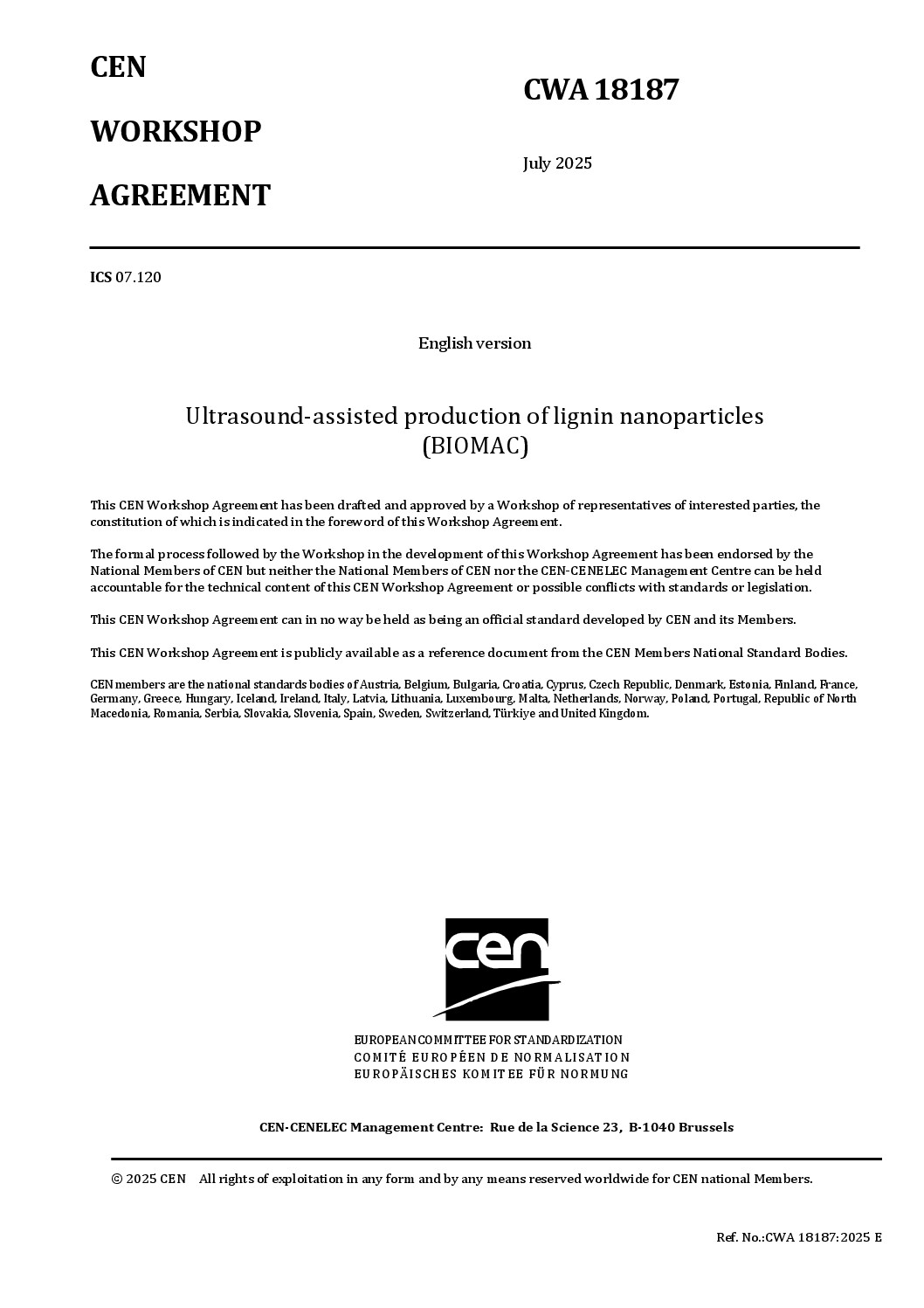The transition to a sustainable bioeconomy requires the development and validation of innovative technologies that exploit renewable resources while minimizing environmental impact. Lignin, a primary byproduct of the pulp and paper industry, represents a significant yet underutilized renewable resource that is currently mostly burned to generate heat and power [1]. Recent advancements have enabled the production of lignin nanoparticles (LNPs), which have high added-value properties compared to bulk lignin for various applications, including bio-based composites [2-5].
Lignin NPs offer several advantages over conventional synthetic NPs. As a naturally derived biopolymer, lignin is abundant, cost-effective, biodegradable, and non-toxic, making it a sustainable alternative with minimal environmental impact. The versatile and eco-friendly potential of LNPs makes them suitable for applications across various sectors. For instance, in the food packaging industry, materials reinforced with LNPs demonstrate extended shelf life due to the antimicrobial and antioxidant properties of lignin, while also reducing dependence on petroleum-based plastics [6-8]. Furthermore, in agriculture, LNPs can be used for the controlled release of fertilizers and pesticides, or in the production of biodegradable mulch films and pots, thereby minimizing environmental burden [9-10]. In medicine, they can act as carriers for targeted drug delivery owing to their biocompatibility, while in cosmetics, they serve as antioxidants and UV-protective agents, enhancing product safety and efficacy [11-13].
Unlike synthetic NPs, the production of LNPs can often be achieved using greener, solvent-free or lowenergy processes [14]. The production of LNPs using ultrasound-assisted processes in aqueous media has emerged as a promising, environmentally benign technology by virtue of its capability to control particle size, enhance material physicochemical properties, and reduce dependence on chemical compounds [15-16]. In this context, this document introduces the concept of producing LNPs at a pilotline scale using ultrasonication. This document outlines the methodological procedures required to produce LNPs with controlled specifications. Furthermore, test methods for the physicochemical characterization of LNPs are also included.
The present process was developed by Creative Nano PC within the framework of the BIOMAC Horizon 2020 project “European Sustainable BIObased nanoMAterials Community” and falls within the patent EP4471093A1 rights [17].
This agreement is necessary due to the increasing interest in biopolymers and the potential for LNPs to significantly impact materials technology, offering eco-friendly alternatives to conventional nano additives. With a focus on environmental sustainability, this CEN Workshop Agreement (CWA) addresses the process parameters and quality control protocols essential for the consistent and reproducible production of LNPs
